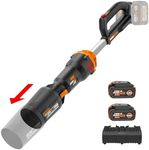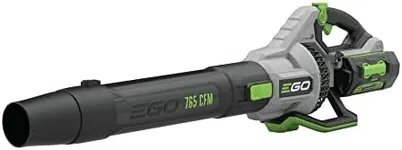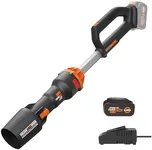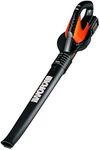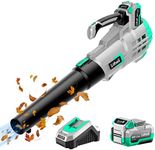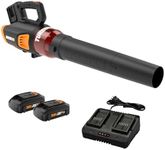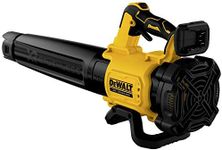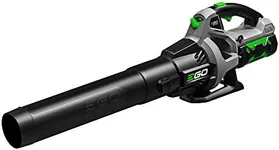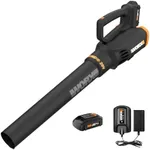Buying Guide for the Best Cordless Leaf Blowers
Choosing a cordless leaf blower can make yard work much easier and more convenient, especially if you want to avoid the hassle of cords or gas engines. The right model for you depends on the size of your outdoor space, the type of debris you need to clear, and how often you plan to use it. Understanding the key features will help you find a blower that matches your needs and makes your outdoor chores more manageable.Battery VoltageBattery voltage indicates the power potential of the leaf blower. Higher voltage generally means more blowing power, which is useful for moving heavier debris or covering larger areas. Leaf blowers typically range from about 18V to 80V. Lower voltage models are lighter and easier to handle, making them suitable for small yards and light tasks like clearing dry leaves. Mid-range voltages offer a balance of power and weight, ideal for medium-sized yards. High voltage models are best for large properties or heavy-duty use, but they can be heavier and more expensive. Consider the size of your yard and the type of debris you’ll be clearing to decide which voltage range fits your needs.
Air Speed (MPH)Air speed, measured in miles per hour (MPH), tells you how fast the air comes out of the blower. Higher air speed helps move stubborn or wet debris, while lower speeds are fine for dry leaves and light materials. Blowers can range from about 90 MPH to over 150 MPH. For basic yard cleanup, a lower air speed is usually enough. If you often deal with wet leaves or heavier debris, look for a model with higher air speed. Think about the typical conditions in your yard to choose the right air speed.
Air Volume (CFM)Air volume, measured in cubic feet per minute (CFM), shows how much air the blower moves. A higher CFM means the blower can clear a larger area more quickly. Models can range from around 200 CFM for light-duty tasks to over 600 CFM for heavy-duty jobs. If you have a small yard or just need to clear patios and walkways, a lower CFM is usually enough. For bigger yards or lots of leaves, a higher CFM will help you finish the job faster. Match the CFM to the size of your property and the amount of debris you expect to handle.
Battery Life/RuntimeBattery life, or runtime, tells you how long the blower can operate on a single charge. This is important if you have a large area to cover or want to avoid frequent recharging. Runtime can vary from about 10 minutes to over an hour, depending on the model and the power setting you use. If you have a small yard, shorter battery life may be fine. For larger spaces, look for models with longer runtimes or consider buying an extra battery. Think about how long your typical yard work session lasts to choose a blower with enough battery life.
WeightThe weight of the leaf blower affects how comfortable it is to use, especially for longer periods. Lighter models are easier to carry and maneuver, making them a good choice for people who may have trouble with heavier equipment or for quick jobs. Heavier models often have more power but can be tiring to use for extended periods. Consider your own strength and how long you’ll be using the blower at a time to find a weight that feels manageable for you.
Noise LevelNoise level is measured in decibels (dB) and tells you how loud the blower will be during use. Quieter models are better for neighborhoods with noise restrictions or if you want to avoid disturbing others. Noise levels can range from about 60 dB (similar to normal conversation) to over 90 dB (as loud as a motorcycle). If you’re sensitive to noise or have close neighbors, look for a model with a lower noise rating. Otherwise, higher noise may be acceptable if you need more power.
Ergonomics and FeaturesErgonomics refers to how comfortable and easy the blower is to use. Features like adjustable handles, variable speed controls, and easy-to-reach buttons can make a big difference in comfort and usability. Some models also offer features like cruise control or a turbo button for extra power. If you plan to use the blower often or for long periods, look for ergonomic designs and helpful features that make the job easier and reduce fatigue.
